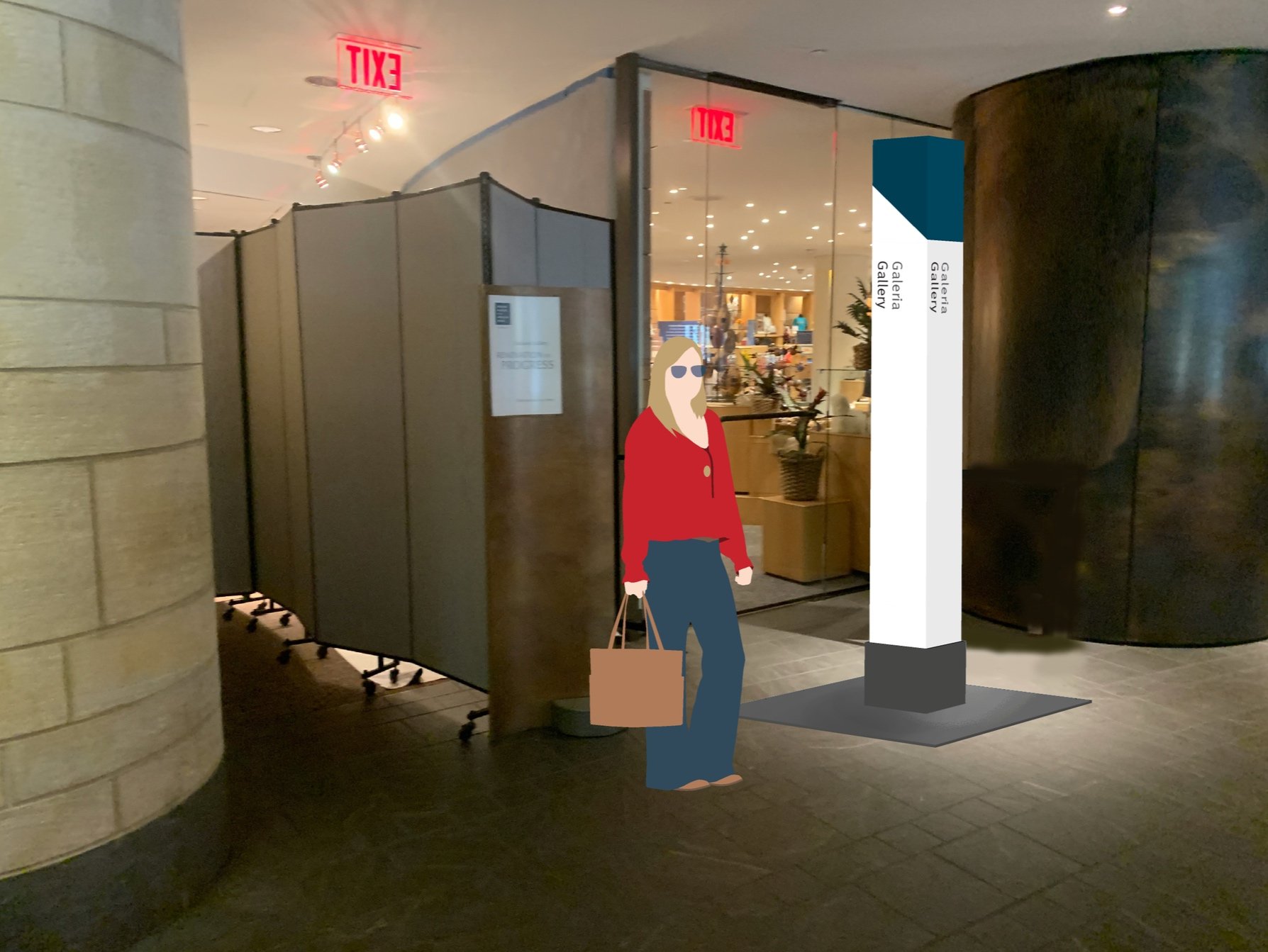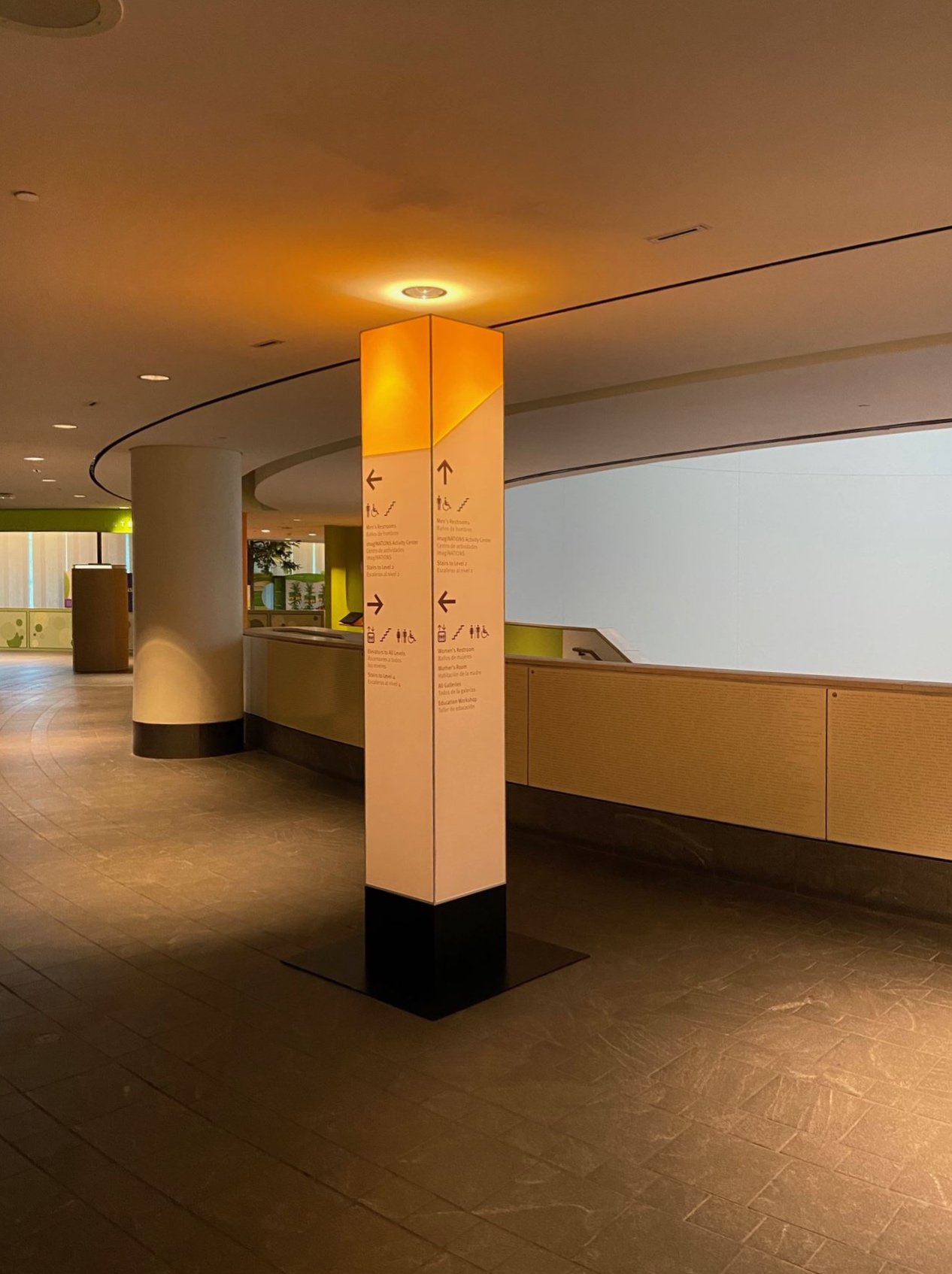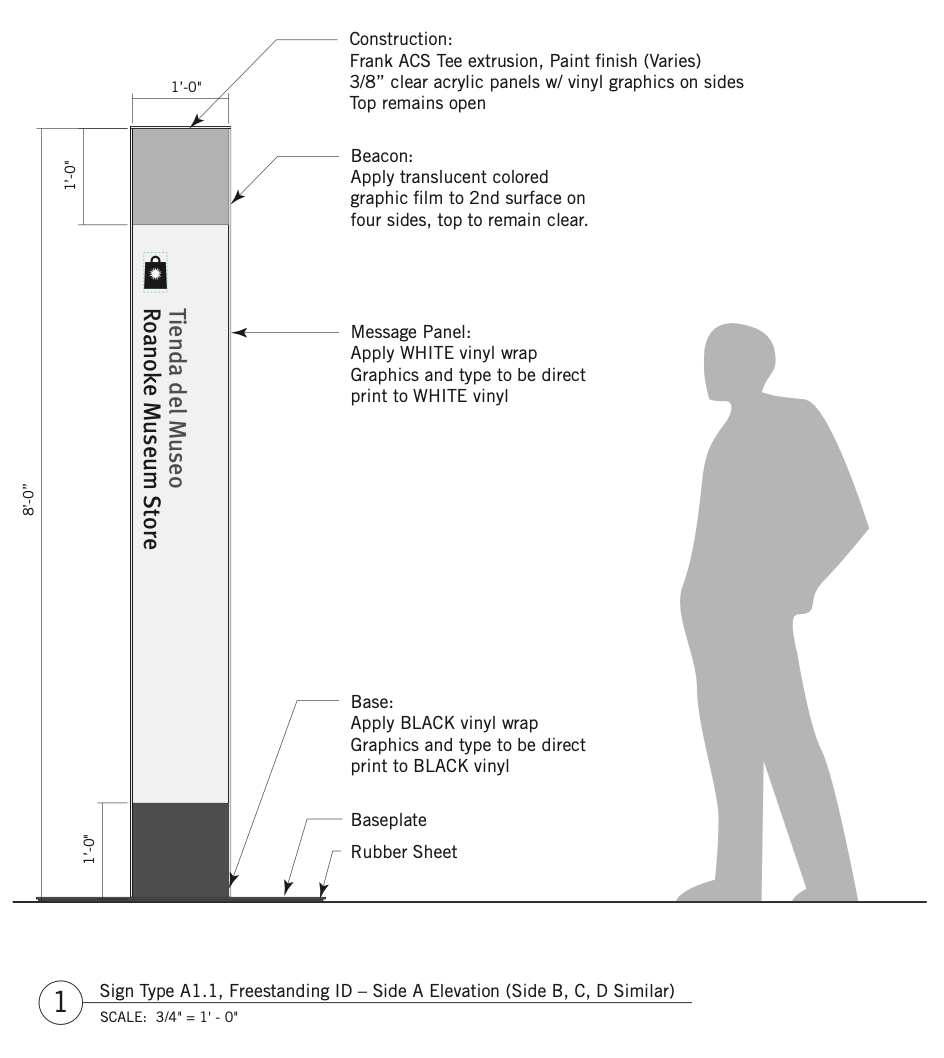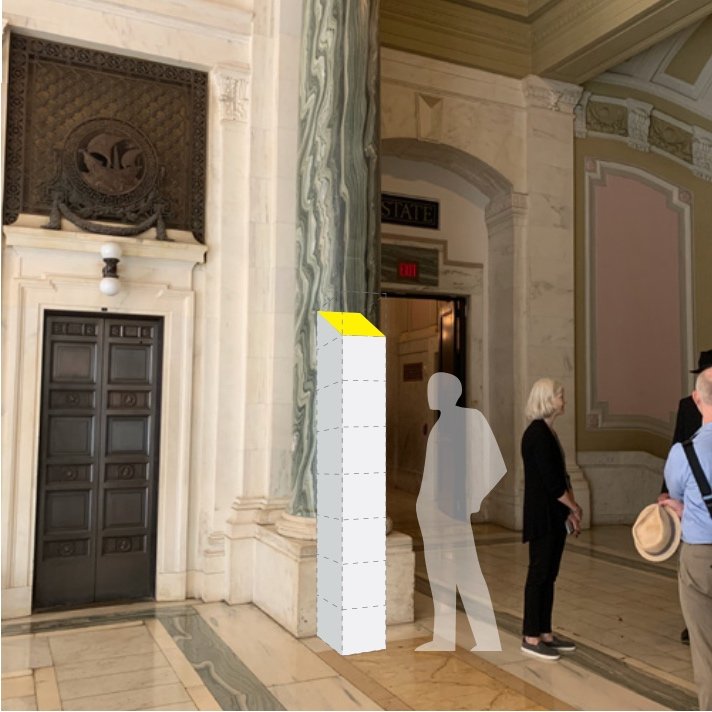NATIONAL MUSEUM
OF THE AMERICAN INDIAN
PROBLEM:
How might we develop a wayfinding strategy that preserves the historical sites its housed within, adaptable across three different locations and honors Indigenous cultures?
BACKGROUND:
The National Museum of the American Indian, part of the Smithsonian Institution, showcases Indigenous cultures through its extensive artifact collection across three facilities and outreach programs, committed to amplifying Native voices and serving as a cultural conduit since 1989.
SOLUTION SUMMARY:
By defining shared and separate project goals for each unique location, we were able to develop mounting solutions and lighting solutions appropriate to the space, while embedding symbolic references to Indigenous culture.
PROJECT GOALS:
Overall Project Goals
Design a visual language for signage that aligns with the NMAI rebrand
Incorporate both temporary and permanent information
Respectfully incorporate references to Indigenous culture
Project Goals specific to NMAI NY
Develop mounting systems that abides by the NY SHPO (New York State Historic Preservation Officers) requirements
Project Goals specific to NMAI DC
Bolster limited existing lighting to ensure signage is legible when additional artificial lighting is unavailable
DEVELOPING THE PRODUCT:
Mounting Solutions
Since the New York location is within the Alexander Hamilton US Customs House, the floors and walls are historical marble clad with ornate details and chandeliers. NY SHPO does not allow any irreversible damage to the building. In response to this, our team developed mounting systems including freestanding weighted pylons, wall-mounted signs with historical grade adhesive, and tension rods.
Lighting
The architecture of the DC location features a curvalinear sculpted stone oculus. The building is aligned perfectly to the cardinal directions and the center point of the US Capitol Building dome, and is filled with details, colors, and textures that reflect the Native universe. The oculus skylight lends dramatic and obscure lighting thoroughout the four floors of the building.
In response to this, we fabricated signs out of 1/2” thick acrylic with an unfinished edge. This allowed any natural light to enter through the edges of the sign and be amplified out through its face.
In areas where natural light could not be found, our team engineered a freestanding pylon to be placed underneath existing artificial light fixtures that can collect light and reflect it outward. This was designed to have a beacon effect drawing visitors to the pylon to find wayfinding information.
Cultural Significance - Freestanding Totems
Our freestanding pylons were not only mounting and lighting solutions, they held deep cultural significance too. In our research phase, we learned, Totem poles symbolize family lineage, tribal history, and cultural identity among Indigenous peoples of the Pacific Northwest Coast, serving as monumental storytelling devices depicting mythological figures and historical events.
To incorporate the symbolism of this storytelling device, we made our pylons slim and tall, orienting information as vertically stacked modules to resemble the totem pole. We ensured some modules were removable to accommodate temporary information. And, we assigned a color the top of each pylon that was associated with wayfinding zone/floor, similar to how Indigenous people used color to signify tribes.









